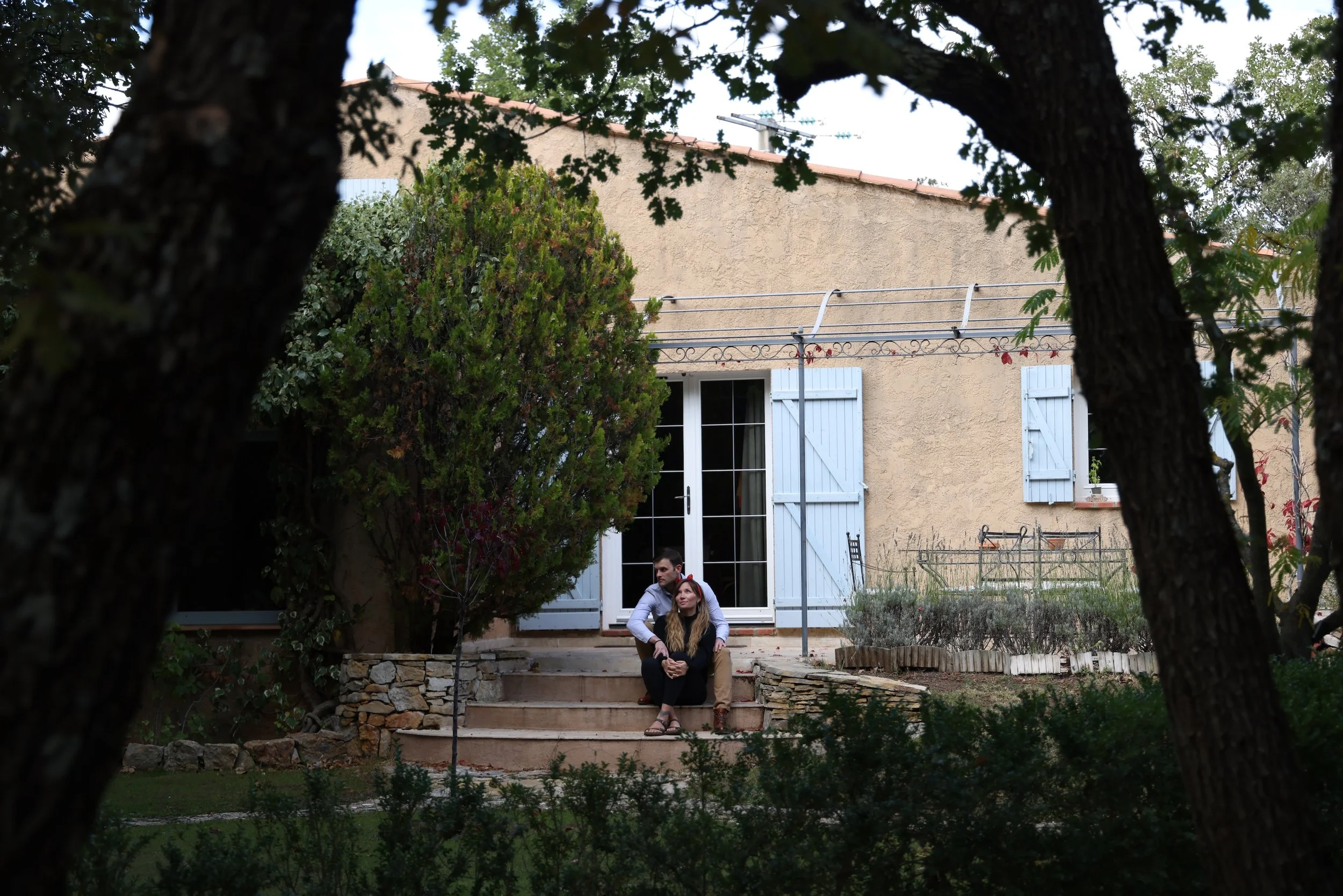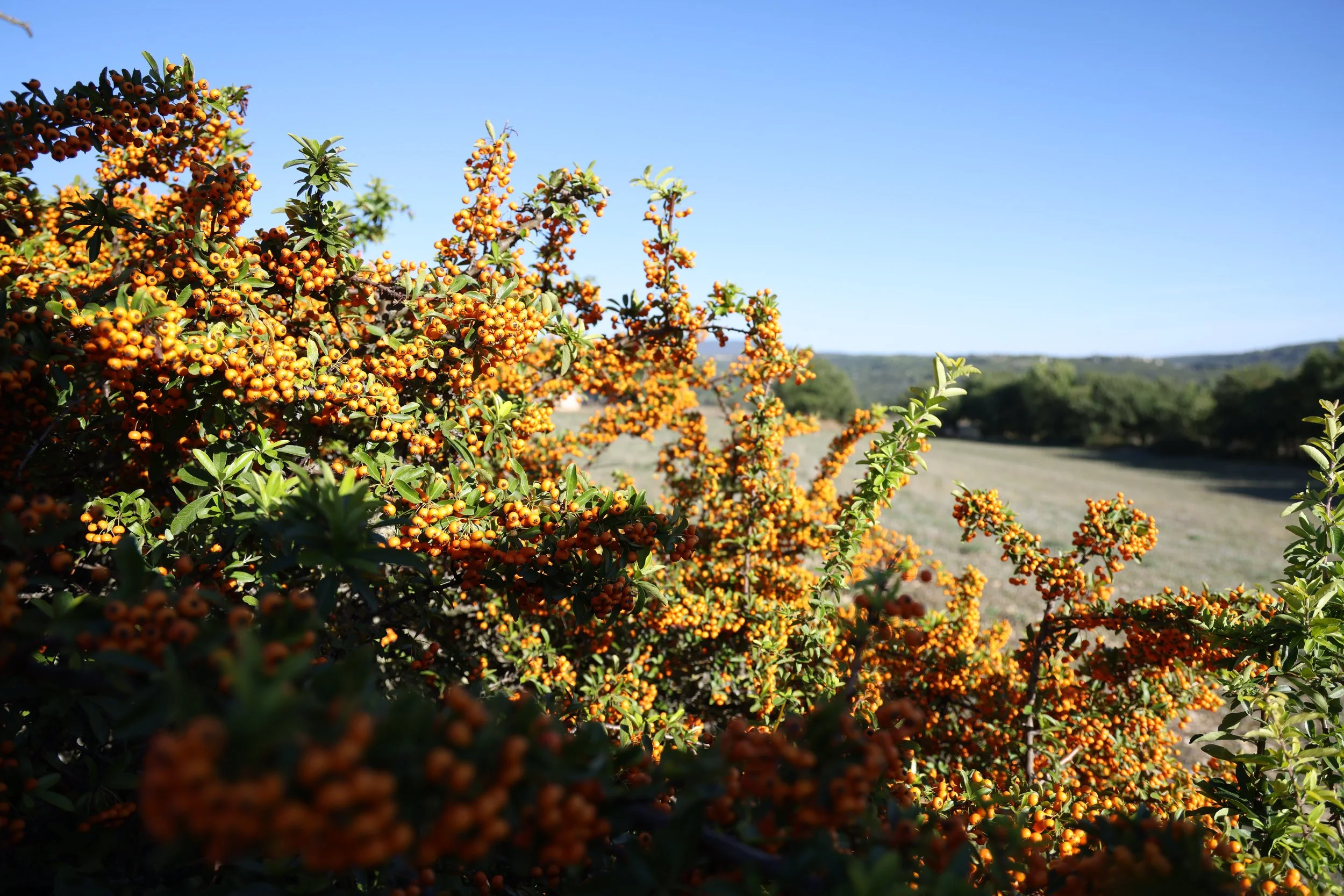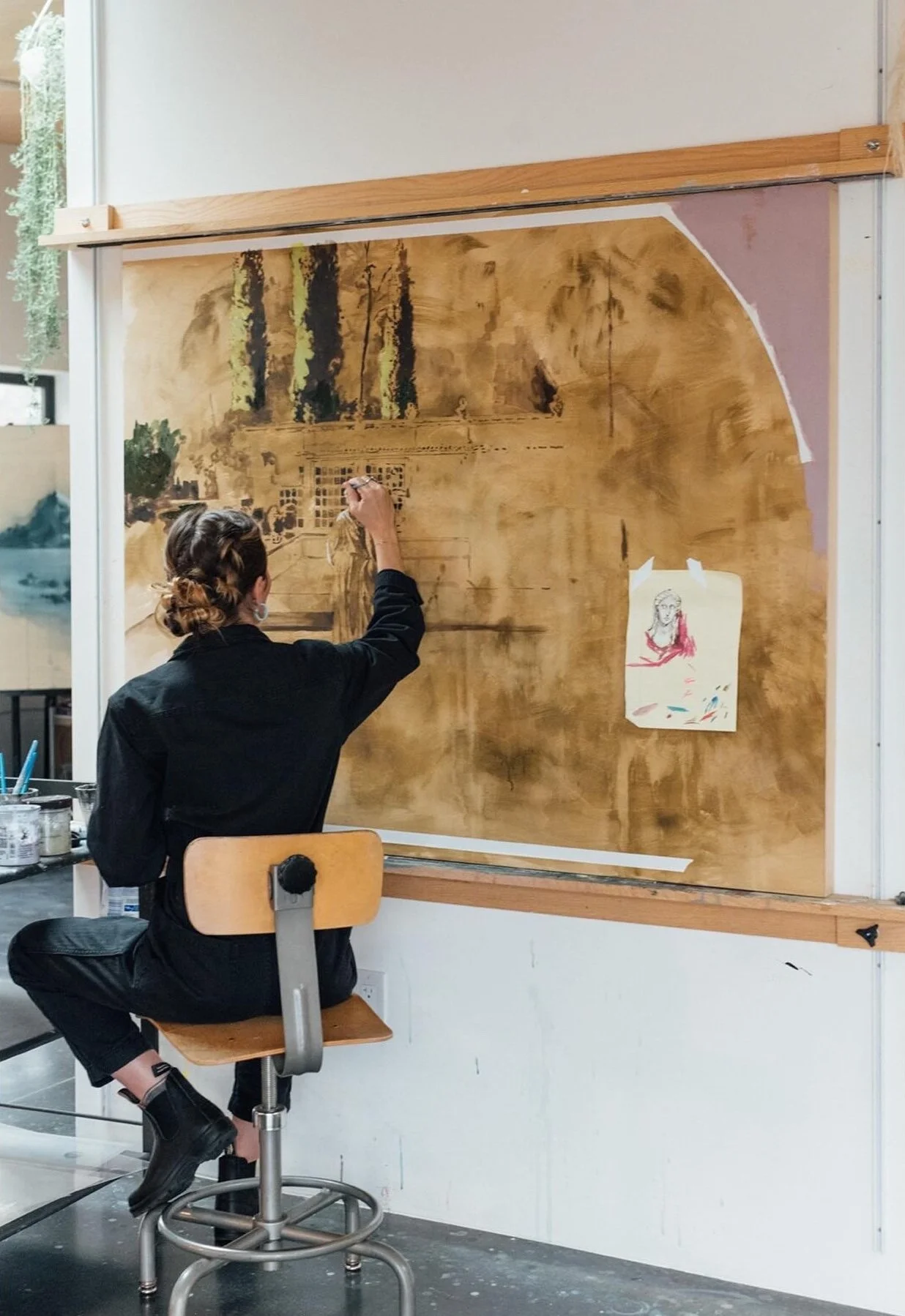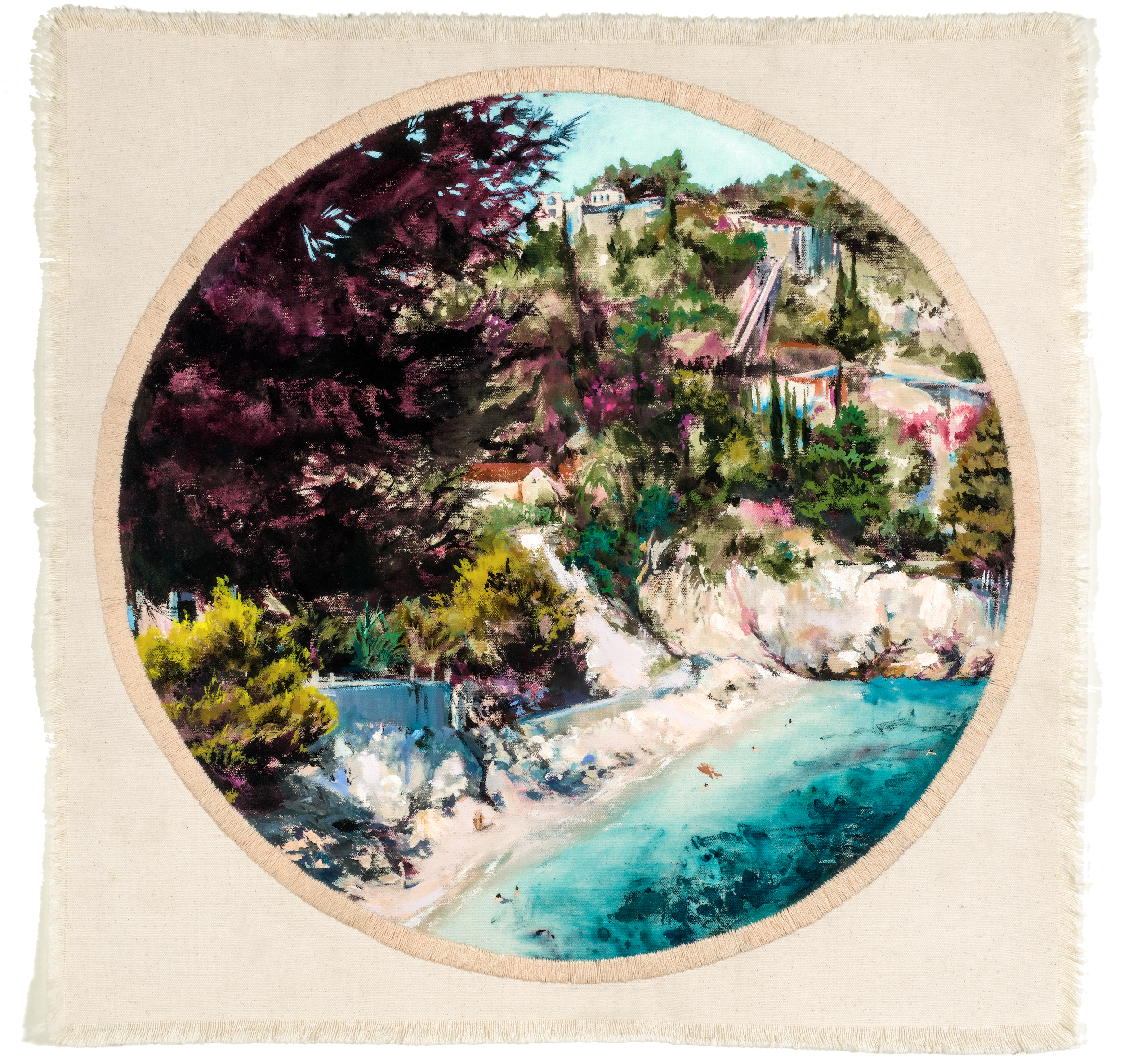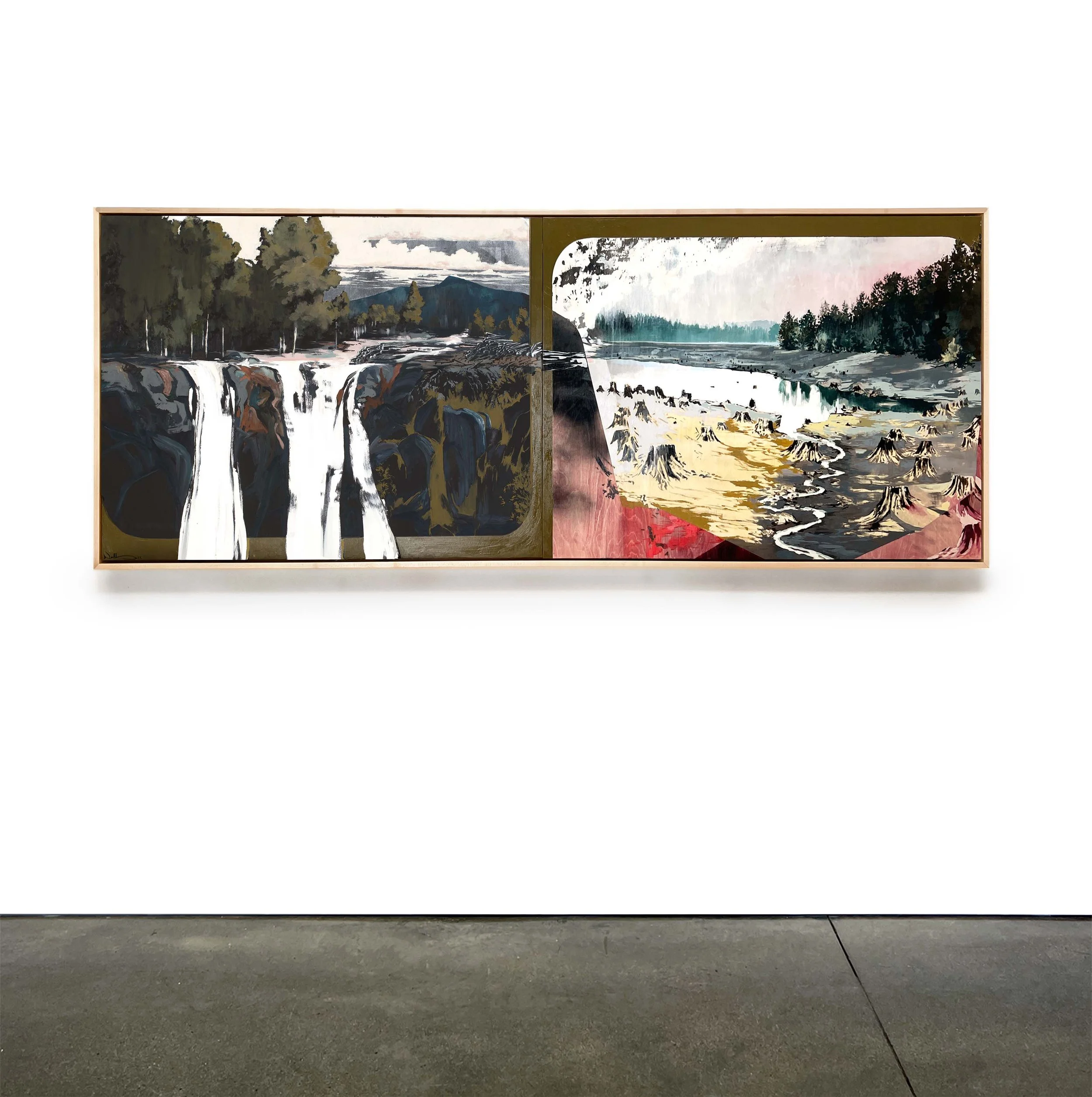In late 2022 I spent a month in the south of France. I have French blood (hence my last name, Phares) and the few times I’ve visited it felt a bit like coming home. My husband and I rented a house in a small town called Régusse, anticipating a month of repose together in the bucolic townships and loosely tamed wilderness of Provence before our first child was to be born a few months later.
The old house was steeped in country charm, lavender and other dried herbs dangling from the high rafters of the interior. Swaths of French Oak stretched out around the stucco and tile building on all four sides. Summer had been whittled down to only a few remaining embers by the time we arrived in early October, but still the sound of cicadas rode the breeze that sang through the weather-beaten shutters. The air was crisp now but something about the setting made it easy to imagine summers that felt endless here, an unrelenting sun bearing down on the earth like a heavy blanket. Perhaps it was all the cracks in the mud.
I set up a modest studio in a back bedroom and committed myself to producing a series of small studies and larger works on raw linen canvas centering on the landscapes of the area. As an artist who enjoys jumping frenetically between mediums and subjects, the residency allowed me the excuse to focus on this general location as a singular subject. The South of France is, of course, generous in its offerings of pleasing vistas, culture, and fare. But I hoped to practice the art of, well, being an artist - which I see as expending the creative effort required to tease out the jewels buried just far enough under the surface that you have to go looking for them.
The studies I produced were limited as time was, so the primary goal was to gather reference material. I lugged my big camera around the nearby townships and up the Cote D’Azure from Marseille to Saint Tropez to Nice, collecting notes and photos that I would use once returning to my Colorado studio.
I felt the first flutterings of my child on an early morning in Nice. It seemed as if a small butterfly had been released deep inside my abdomen- taking a first, brief flight before quickly settling back to stillness in the dark. The moment is called “quickening” and it was believed until as late as the early 1900s that this event marked the beginning of life.
One afternoon we visited the chapel that Henry Matisse painted in the 1950s. I knew Matisse’s work of course, but had never seen it in person. The simplicity of the curving patterns and bold colors were in high contrast to the simple stone walls of the chapel and the bleached countryside within which it was embedded. As someone who likes to include much detail in artworks, I strained sometimes to appreciate it adequately, working to avoid the trap that viewers of such creative projects can fall prey to: assuming that the sparing nature of his compositions were a product of quick work. In truth, the series of sketches remaining at the chapel and descriptions of his process revealed that the final display was a result of long periods of study and intensive efforts to pare down. Much as with writing, it is usually the case that the more brief the result, the more work was required to cut the fat and get to the core of the subject.
Like much of my work centered on a specific place, I aspired not to produce portraits of exactly what I observed, but instead to demonstrate my perception of its spirit. What did it feel like? What of its history and ecology were stamped so deeply in the region’s fabric that it stood out as a unique locale within the broader universe that I’d witnessed as yet? What places drew me in as if by force of magnetism - either due to their beauty or some enduring element of mystery? It all sounds very romantic but ultimately I wouldn’t produce most of the actual work until more than a year and a half from then, so for the project to produce meaningful results it was important to make sure my observations were well enough preserved to be coaxed out so many months later. To do this requires the expenditure of many hours just wandering about, allowing the quiet story of the landscape to unfold naturally over an accumulation of time spent within it.
I picked back up on this work recently, finally making space on my calendar after a series of demanding exhibitions over the last year and a half came to a close. As winter approaches in the Rocky Mountains almost 2 years after the stay in Provence, I am grateful to be spirited back to this time and place for the next few months.
Proposed exhibition contents:
2 - 60x48” panels
3 - 20x20” round embroidered linens
1 - 80x30” panel diptych (single frame like “Course of the Valley”)
3 - 30 x 40” panels
6 to 8 - 11x14” panels
Set of 6 painted Ostrich eggs
The Work (so far)
60x48” panel (in progress)
Depiction (in progress) of the Jardin Serre de la Madone, a notable garden just up the coast from Nice, France that we visited towards the end of our trip. The base layer (shown) is acrylic and the piece will be finished with oil.
Series of three 20x20” embroidered linens
I began all three of these paintings during my residency in Provence and finished them back at my studio in Colorado. Each depicts a location that I visited during that trip, selected for their unique botanics and varied mechanisms (natural and engineered) of retaining water. The circular borders of each painting are embroidered with French thread to add some delicacy to the pieces. The raw St. Mary’s cotton linen artworks are float-mounted to display the fringed edges of the material and framed in maple.
Côte d'Azur, 20x20” | Oil and embroidery on St. Mary’s Cotton
The Uncontainable Waters, 20x20” | Colored pencil, acrylic, and embroidery on St. Mary’s Cotton
Views of Cypress, 20x20” | Oil and embroidery on St. Mary’s Cotton
Series of six female figures on 11x14” panels
The spirit of southern France felt very feminine to me. Creating this series offered a chance to explore that notion more. A number of the reference photos were taken by Émile Joachim Constant Puyo in the late 1800s/early 1900s, a French photographer credited with championing the practice of photography as an artistic medium. Also included is a reference to a portrait of poet Edna St. Vincent Millay, and a female farmer who I am connected to. Given that I was with child during the time of my French residency, I was hyper-focused on the unique traits of womanhood and my goal for this series was to highlight women as figures of not just inherent beauty, but of great strength and deep intellect.
Ruminor, 14x11” | Oil, acrylic, and gouache on panel
In Her Time, 11x14" | Acrylic and gouache on panel
You and Your Clouds, 14x11" | Acrylic and gouache on panel
Set of 6 painted ostrich eggs
I have not much ventured into the territory of creating art in three dimensions before this proposed series. I wanted to include this series as a modern take on the classic French Fabergé egg which arrived on the scene in the late 1800s and were seen as a symbol of wealth and luxury. Also pertinent to this body of work is the notion that the decorated egg is seen as a representation of fertility and new life.
The images below are of the first of the series (not quite finished), included here as proof of concept. Each ostrich egg is approx. 5” in diameter, 6” in height and displayed on vintage brass stands.
80x30” panel (comparative works shown)
Images of other comparative works I’ve completed in the past two years are below. This piece will be focused on French countryside with nods to local architecture, likely oil on panel. Both panels will be mounted side-by-side in a single frame.
Marble Canyon, 80x30” | Oil on panel | 2024
Course of the Valley, 80x30” | Oil, spray paint, and acrylic on panel | 2022


